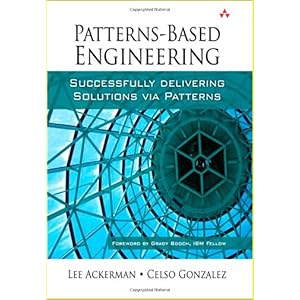Throughout my experience with working on back-end systems for anything from big governmental to online gaming, I have came to develop a particular appreciation of the interactions that happen between data consumers and data producers. The following is a non-exhaustive and non-authoritative review of the different data interaction patterns that I've came up to play with. These are mostly unstructured notes from my experience in the field that I hope may turn useful to others.
As you know, when data is involved caching comes into play when performance and scalability are sought. In the coming diagrams, cache is represented as a vertical rectangle. The persistent storage is represented as a vertical blue cylinder, while horizontal cylinders represent some form of reliable and asynchronous message delivery channels. The data interactions are represented with curvy arrows: they can represent reading or writing.
Direct [R/W]

Besides the obvious drawbacks coming from the temporal coupling with the persistent storage mechanism, the interesting thing to note in such a trivial data access pattern is that there is often some form of request-scoped caching happening without the need to explicitly do anything. This first level of cache you get from data access layers help in optimizing operations provided they occur in the same request (to which is bound the transaction, if one exists).
Being short lived, this kind of caching is free from the problem of expired cache entries eviction: it can kick in transparently without the application being aware of it.
Through Cache [R/W]

Reading through cache is a simple and powerful mechanism where an application tries first to read from a long lived cache (a very cheap operation) and, if the requested data can't be found, proceeds with a read in the persistent storage (a way more expensive operation).
It's interesting to note that write operations don't necessarily happen the same way, ie. it is well possible that a write to the persistent storage doesn't perform a similar write in the cache. Why is that? Cached data is often a specific representation of the data available in the storage: it can be for example an aggregation of different data points that correspond to a particular cache key. The same persistent data can lead to the creation of several different cache entries. In the case, a write can simply lead to an immediate cache flush, waiting for subsequent read operations to repopulate these entries with new data.
Conversely, it's possible to have write operations update the cache, which opens the interesting problem of consistency. In the current scenario, the persistent storage remains the absolute truth of consistency: the application must handle the case when the cache was inconsistent and led to an invalid data operation in the persistent storage. I've found that localized cache evictions work well: the system goes through a little hiccup but quickly restores its data sanity.
Though some data access technologies allow the automatic management of this kind of second level of caching, I personally prefer that my applications have an explicit interaction with the caching technology they use, and this at the service layer. This is especially true when considering distributed caching and the need to address the inherent idiosyncrasies of such a caching model.
Cache distribution or clustering is not compulsory though: you can reap the benefits of reading through cache with localized caches but at the expense of needing to establish some form of stickiness between the data consumers and the providers (for example, by keeping a user sticky to a particular server based on its IP or session ID).
This said, stickiness skews load balancing and doesn't play well when you alter a pool of servers: I've really became convinced that you get better applications by preventing stickiness and letting requests hit any server. In that case, cache distribution or clustering becomes necessary: the former presents some challenges (like getting stale data after a repartition of the caching continuum) but scales better than the latter.
Write Behind [W]

Writing behind consists in updating the data cache synchronously and then defer the writing to the persistent storage to an asynchronous process, through a reliable messaging channel.
This is possible with regular caching technologies if there is no strong integrity constraints or if it's acceptable to present temporarily wrong data to the data consumer. In case the application has strong integrity constraints, the caching technology must be able to become the primary source of integrity truth: consistent distributed cached that supports some form of transactional data manipulation becomes necessary.
In this scenario, the persistent storage doesn't enforce any form of data constraint, mostly because it is too hard to propagate violation issues back to the upstream layers in any meaningful form. One could wonder what is the point of using such a persistent storage if it is dumbed down to such a mundane role: if this storage is an RDBMS, there is still value in writing to it because external systems like a back-office or business intelligence tools often require to access a standard data store.
Cache Push [R]

Pushing to cache is very useful for data whose lifecycle is not related to the interactions with its consumers. This is valid for feeds or the result of expensive computations not triggered by client requests.
The mechanism that pushes to cache can be something like a scheduled task or a process consuming asynchronous message channels.
Future Read [R]

In this scenario, the data producers synchronously answers the consumers with the promise of the future delivery of the requested data. When available, this data is delivered to the client via some sort of server push mechanism (see next section).
This approach works very well for expensive computations triggered by client requests.
Server Push [R]

Server push can be used to complement any of the previous interactions: in that case, a process prepares some data and delivers it directly to the consumer. There are many well known technological approaches for this, including HTTP long-polling, AJAX/CometD, web sockets or AMQP. Enabling server push in an application opens the door to very interesting data interactions as it allows to decouple the activities of the data consumers and producers.














